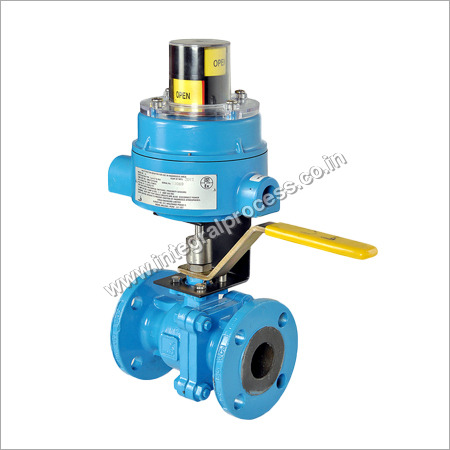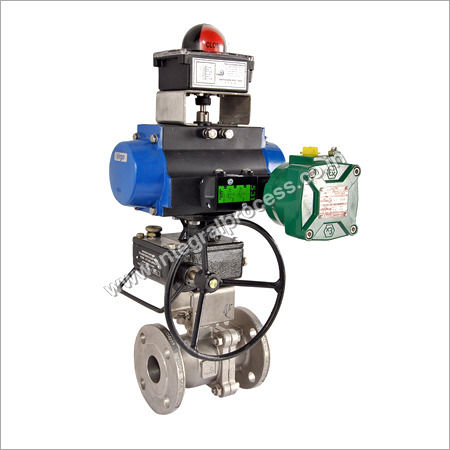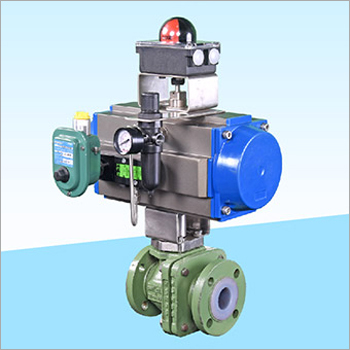Two Piece Ball Valves
Two Piece Ball Valves Specification
- Structure
- Two Piece
- Connection
- Screwed / Flanged / Socket Weld
- Caliber
- Full Bore
- Channels
- Single Channel
- Material
- Stainless Steel / Carbon Steel
- Power
- Manual
- Media
- Water, Oil, Gas, Air
- Port Size
- 1/2 inch to 12 inch
- Flange
- ANSI / DIN / JIS Standard
- Finish
- Polished / Coated
- Application
- Industrial, Chemical, Petrochemical, Water Treatment
About Two Piece Ball Valves
Since our year of establishment 2001, we are committed to manufacture and supply an extensive array of Two Piece Ball Valves. The offered valves are manufactured by our experienced professionals using premium grade metal alloy in line with the international industry standards. Offered valves are stringently tested by our quality controllers on several parameters to deliver defect free range to the clients. Provided valves are widely used for high pressure water and fluid flow regulation. These Two Piece Ball Valves can be availed in several specifications at industry leading prices.
Two Piece Ball Valves Features:
- Corrosion proof
- Excellent functionality
- Easy installation
- Application specific design
- Hard Construction
- Fine Finish
- High Quality Materials
- Strong Installation
- Standard Dimensional Accuracy
Two Piece Ball Valves Specifications:
| Type | Ball Valve |
| Material | Stainless Steel , Carbon Steel |
| Branded (Y/N) | Yes |
| Pressure | High Pressure, Medium Pressure, Low Pressure |
| Pattern | Two Piece |
| Brand | IPC |
Advanced Design and Robust Construction
Two Piece Ball Valves combine the strength of investment cast or forged stainless and carbon steel with refined technical features. These valves are engineered to API 6D, BS 5351, and ASME B16.34 standards, guaranteeing high durability and performance in demanding environments. Their full bore, blowout proof stem, fire safe design, and anti-static device ensure long service life and operational safety even in critical applications.
Versatile Applications and Flexible Operation
Engineered for versatility, these ball valves are suitable for a wide range of media including water, oil, gas, and air. Available in port sizes from 1/2 inch to 12 inches, they can be specified with lever or gear operation, single channel structure, and a variety of end connections such as screwed, flanged, socket weld, or butt weld. This flexibility makes them the preferred choice for industrial, chemical, petrochemical, and water treatment projects across global markets.
FAQs of Two Piece Ball Valves:
Q: How do Two Piece Ball Valves with PTFE, RPTFE, or CFT seats help ensure chemical compatibility?
A: These seat materials provide excellent resistance to a broad spectrum of chemicals, making the valves suitable for use in aggressive media typically encountered in industrial, chemical, and petrochemical applications.Q: What is the process for installing these ball valves in different piping systems?
A: Installation depends on the chosen end connectionscrewed, flanged, socket weld, or butt weldallowing easy adaptation to various pipeline setups. Always follow the relevant piping standards (ANSI, DIN, JIS) and use correct tools and gaskets to ensure a proper seal and safe operation.Q: When should a user opt for gear operated handles over lever operated ones?
A: Gear operated handles are recommended for larger valve sizes or higher pressure ratings (typically above 4 inches) where manual torque is significant. Lever handles are ideal for smaller sizes and provide simple, quick quarter-turn operation.Q: Where can these Two Piece Ball Valves be effectively utilized?
A: These valves can be deployed in industrial processing, chemical manufacturing, petrochemical plants, and water treatment facilities, offering reliable shutoff for water, oil, gas, and air systems.Q: What benefits do the blowout proof stem and fire safe design offer?
A: The blowout proof stem enhances operator and system safety by preventing stem ejection under pressure, while the fire safe design ensures valve integrity and seal retention even during fire exposure, minimizing hazardous leakage.Q: How does the anti-static device improve valve safety during operation?
A: The anti-static device prevents static electricity buildup between the ball and stem or body, reducing the risk of sparkingan essential safeguard when handling flammable fluids or gases.Q: What is the significance of Class VI leakage standard for these valves?
A: Class VI leakage class ensures minimal leakage rates, which is crucial for applications demanding tight shutoff and operational reliability, especially in processes involving hazardous or valuable fluids.
Tell us about your requirement

Price:
Quantity
Select Unit
- 50
- 100
- 200
- 250
- 500
- 1000+
Additional detail
Mobile number
Email
More Products in Ball Valves Category
Floating Ball Valves
Price 6500 / Unit
Minimum Order Quantity : 1 Unit
Material : Other, Carbon Steel / Stainless Steel
 Send Inquiry
Send Inquiry






 Send Inquiry
Send Inquiry Send SMS
Send SMS